The Upside of Frugality
Frugal living discussions often talk about pinching pennies or “stretching a dollar.” A penny saved is a penny earned, or so the saying goes, but is that actually the case?
What if that penny saved could end up being much more over time? Turns out, living frugally can save you way more than you might think.
Money is Not Linear
Frugality is typically thought of in straightforward, or linear, terms— x plus y equals z. If you skip a daily $5 takeout coffee, you’ll save $35 a week, $150 a month or $1,800 a year.
Using that same thought process, if you cut your monthly spending in half, your income will last twice as long. Makes sense, right?
Well, yes and no. This assessment isn’t wrong, but it’s incomplete. Pinching pennies does add up in the short-term, but the long-term payoff is likely bigger than you think. This is because of the time value of money, aka: interest. When you invest the money you save, you’re stretching that dollar into something greater as it accumulates interest over time.
For instance, instead of simply saving $1,800 a year making coffee at home, you’re really saving $1,800 a year plus any interest you’d earn in investing those dollars in a money market or retirement account. That $5 cup of coffee could eventually be worth an untold amount—would you give it up for $10, $20, or $50 in the future?
Time Value of Money
Maybe saving $50 per cuppa seems like a lot to you right now, and maybe not. But it’s worth considering how valuable frugality now will be to you down the road. Lowering your expenses now so you can save more and take advantage of interest gains could be the leg up your future self needs to pay cash for a car, make a down payment on a home, go on that dream vacation, or send a kid to college.
Living frugally adds up even in retirement. Say you have $500,000 in an investment account when you retire, and you spend $75,000 a year. At a 5% return, the money will last 7 years. If you cut your savings to $50,000, you’ll get 13 years instead. But if you slash your spending in half—to $25,000 a year—the number skyrockets to 62 years.Reducing your expenses in half increases the length you can live off that initial amount by nearly 5 times.
And, it’s worth noting, a 5% return on investment is fairly conservative—the average stock market return for the S&P 500 (an index fund composed of the 500 largest companies in the U.S.) across the past decade was around 13.6%. Even accounting for 1-3% inflation, your money is still getting a sizable increase in value.
If you want to keep your expenses at $75,000 annually in retirement, you’ll need to save more—a lot more—than $500,000. You can live on less and save more now to build more for retirement (maybe even early retirement) or live on less when you get there to stretch your dollars.
Scrimp to Save?
This same concept applies to any money goal that could benefit from the runway of time. Money you save now, for the future, is worth more than the cost of what you’re sacrificing today.
This doesn’t mean it’s best to get as close to zero spending as possible. You have the freedom to stretch your dollars (or not), as you choose. But it is worth considering the future costs tied to everyday spending habits, and think about how a few frugal living habits could tip the scales in your favor. In other words, a penny saved could be a nickel, a dime, a quarter, or maybe even a dollar or more down the road.
This article has been republished with permission. View the original article: The Upside of Frugality.




Post your comment
Comments
No one has commented on this page yet.
RSS feed for comments on this page | RSS feed for all comments